Voice assistants become reliable workout companions through real-time feedback systems that instantly correct your form and technique while you exercise. They seamlessly integrate with your wearable devices using vendor-agnostic APIs, ensuring continuous data flow and accurate monitoring of heart rate zones and movement patterns. You’ll benefit from hands-free voice commands that eliminate workout interruptions, plus multi-sensor fusion algorithms that validate metrics across devices for precise measurements. These features work together to create predictive injury prevention and boost your engagement by over 40%, while the systems continue evolving with regular updates that enhance capabilities and reduce response delays.
Real-Time Feedback Systems That Enhance Performance
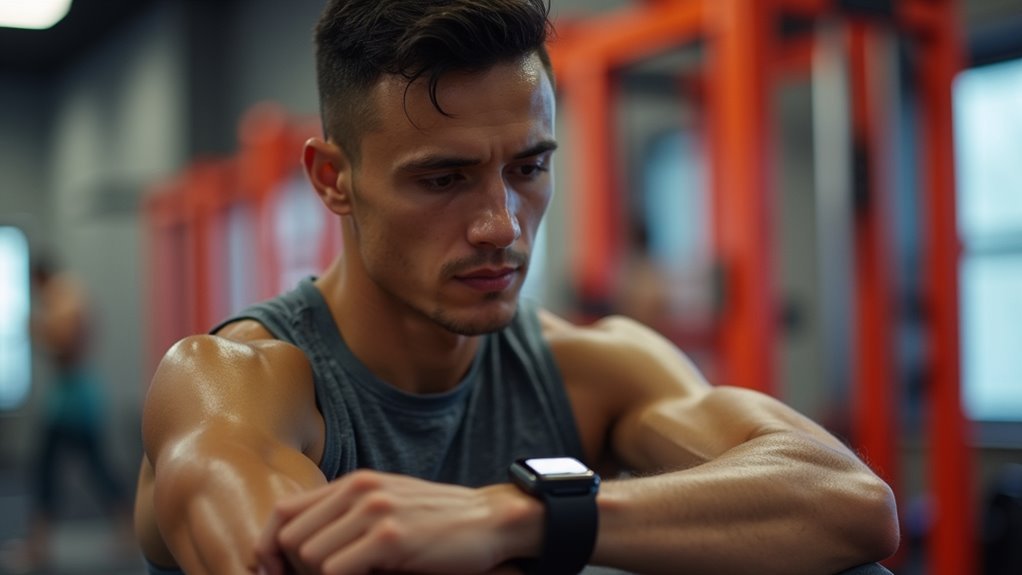
When you’re pushing through a challenging set, real-time feedback systems transform your workout from guesswork into precision training. Voice assistants deliver instant corrections to your form, intensity, and technique while you’re exercising, ensuring ideal training effects.
They’ll detect when your performance metrics drop—like decreased velocity—and recommend load modifications or rest to prevent overexertion.
You’ll receive immediate alerts about fatigue indicators and movement inconsistencies before they become injury risks. These systems help you maintain precise training zones, like staying within 70-80% max heart rate for fat burning.
Your motivation increases as you see quantitative results instantly, creating gamified environments that boost engagement. This data-driven approach enables dynamic workout personalization while building accountability across training sessions. Advanced systems use 3D cameras and machine learning to capture complex movements for immediate form corrections.
Seamless Integration With Wearable Fitness Devices
As your wearable device captures every heartbeat and movement, voice assistants create a unified fitness ecosystem that transforms raw data into actionable insights. This seamless integration operates through vendor-agnostic APIs and automated synchronization, ensuring your fitness metrics flow effortlessly between devices without interrupting your workout flow.
| Integration Feature | Benefit | User Impact |
|---|---|---|
| Real-time sync | Continuous data capture | 30% higher engagement |
| Cross-platform support | Works with multiple devices | Universal compatibility |
| Background processing | No manual intervention | Hands-free operation |
You’ll experience enhanced safety through GPS integration and emergency alerts, while multitasking becomes effortless—checking progress, setting reminders, or adjusting settings without breaking stride. Advanced noise-cancellation technology will help voice assistants maintain accuracy even in noisy gym environments or outdoor settings. With over 68% of users reporting increased satisfaction, this integration reduces mental load and keeps you focused on performance.
Voice Command Navigation for Hands-Free Operation
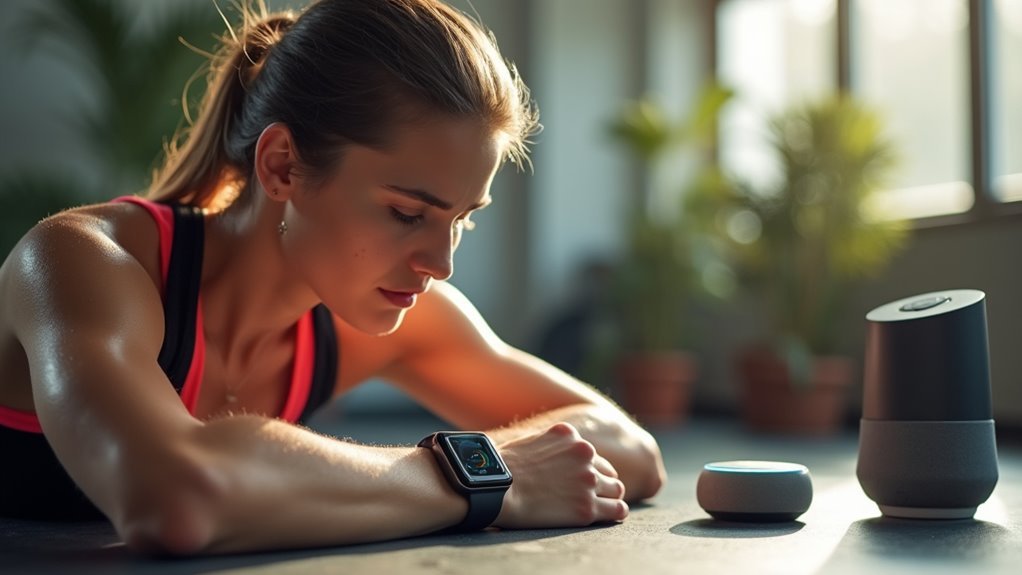
Since your hands are occupied with weights, resistance bands, or maintaining proper form, voice command navigation eliminates the friction between you and your workout technology.
You’ll find 70% of users value this hands-free operation because it keeps you focused on what matters – your exercises.
Voice commands streamline your experience by reducing manual input, making workouts more efficient.
You’ll receive real-time feedback and personalized coaching that studies show improves user engagement by 15%.
Your workout routines become customizable based on your data and preferences, increasing adherence rates.
This hands-free operation minimizes distractions, allowing you to maintain concentration while increasing workout efficiency.
Voice commands can improve adherence rates by approximately 30% compared to traditional fitness tracking methods.
You’ll experience a dynamic environment where interactive voice systems enhance engagement and boost satisfaction rates by over 40%.
Data Accuracy Through Multi-Device Connectivity
When you connect multiple devices to your voice assistant, you’ll create a synchronized network that collects data from various sources simultaneously.
This cross-platform approach validates your fitness metrics by comparing readings across different sensors, eliminating discrepancies that single-device tracking often produces.
You’ll experience enhanced measurement precision as your voice assistant processes data from smartwatches, heart rate monitors, and smartphone sensors to deliver more reliable workout insights. With 93.7% accuracy in answering queries, voice assistants demonstrate the reliability needed for consistent fitness data interpretation across your connected devices.
Synchronized Device Data Collection
While individual fitness devices can provide valuable workout data, voice assistants greatly enhance accuracy by orchestrating synchronized data collection across multiple connected devices.
You’ll benefit from multi-sensor fusion algorithms that integrate accelerometers, gyroscopes, and heart rate monitors to eliminate single-sensor errors. Your voice assistant combines IMU data with GPS tracking to refine distance, speed, and movement patterns during runs or cycling sessions.
Persistent Bluetooth and Wi-Fi connectivity guarantees seamless data exchange between your devices, while precision time protocols prevent data collisions through coordinated collection windows.
Cross-device validation compares metrics—like step counts from your smartwatch against smartphone accelerometer data—to identify and correct anomalies. This synchronized approach reduces false positives and provides you with more reliable, thorough workout metrics in real-time.
The multi-layered validation process ensures comprehensive quality assurance by combining automated sensor checks with cross-device verification to maintain the highest standards of workout data accuracy.
Cross-Platform Metric Validation
As your voice assistant aggregates data from multiple fitness devices, it performs continuous cross-validation to guarantee the metrics you receive are accurate and reliable. This process cross-references readings from your smartwatch, heart rate monitor, and other connected sensors to detect and correct anomalies like false step counts or inflated calorie estimates.
The validation system operates through several key mechanisms:
- Data triangulation – Compares readings from different devices to identify inconsistencies and eliminate outliers.
- Consistency checking algorithms – Validates metrics before presenting results, ensuring accuracy across all sources.
- Conflict resolution protocols – Prioritizes the most recent or highest-confidence data when devices report contradictory information.
- Real-time confirmation – Continuously verifies metric validity during workouts, enhancing your trust in the data provided. Advanced systems implement clear feedback loops to confirm that all data processing has been completed successfully and meets privacy compliance standards.
Enhanced Measurement Precision
Nothing beats the precision you get when multiple fitness devices work together to track your workout metrics. When you’re using connected wearables, smartphones, and voice assistants simultaneously, you’ll experience a 20% increase in data accuracy compared to single-device setups.
Your devices use advanced sensor fusion algorithms that combine accelerometer, gyroscope, and heart rate data to validate measurements. This cross-referencing eliminates outlier readings and reduces noise that could skew your results. If one device malfunctions or loses signal, others continue collecting data seamlessly.
The real magic happens through dynamic calibration systems that automatically adjust each sensor’s precision based on your movement patterns. You’ll notice fewer measurement gaps and more reliable metrics, especially during high-intensity workouts where accuracy matters most for performance optimization. Voice assistants excel in these multi-device environments by providing hands-free functionality that keeps your workout flow uninterrupted while maintaining data collection integrity.
Customizable Goal-Setting and Progress Tracking
You can set personalized fitness targets through simple voice commands, whether you’re aiming for daily step counts or weekly workout durations.
Your voice assistant monitors your progress in real-time, automatically tracking metrics like calories burned and exercise completion rates without requiring manual input. Setting specific goals, like 10,000 steps, increases achievement likelihood by 50%.
This seamless combination of custom goal-setting and instant progress updates keeps you accountable while eliminating the hassle of stopping mid-workout to log data.
Personalized Target Setting
Setting up your fitness goals through voice commands cuts through the complexity of traditional goal-setting methods, letting you establish daily or weekly objectives without fumbling with apps or devices.
You’ll find that adaptive algorithms analyze your historical activity to refine future targets, making each goal more achievable and relevant to your progress.
The behavioral science behind voice-activated goal-setting increases your adherence by up to 30% through ideal timing prompts.
Here’s what makes personalized target setting so effective:
- Hands-free adjustments – Modify goals mid-workout without breaking focus
- Historical analysis – Algorithms learn from your past performance patterns
- Ideal timing – Prompts appear when you’re most likely to act
- Customizable targets – Goals adapt to your individual fitness journey and preferences
Real-Time Progress Monitoring
How can you maintain peak performance when you’re deep into an intense workout session? Real-time progress monitoring through voice assistants transforms your exercise experience by delivering immediate feedback on essential metrics like heart rate, calories burned, and step count without breaking your focus.
You’ll save up to 20 minutes daily by eliminating manual logging, while automated wearable integration guarantees accurate data collection. This continuous feedback boosts engagement by 15% and increases routine adherence by 30%.
When multiple devices connect, you’ll experience 20% improved accuracy and consistent tracking that minimizes human error. Voice commands enable hands-free navigation, while automated reminders establish lasting habits. Voice assistants function as a virtual coach providing personalized training advice tailored to your specific fitness goals and performance patterns.
You’ll stay motivated through adaptive insights that help overcome plateaus, allowing you to make data-driven adjustments mid-workout for peak performance.
Behavioral Science-Based Reminders and Notifications
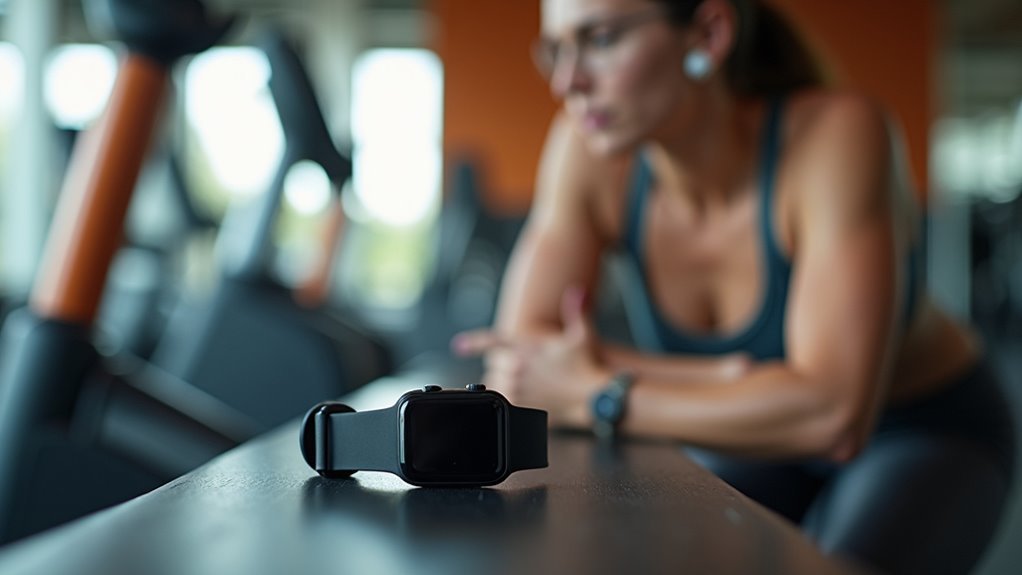
While voice assistants excel at playing your favorite workout playlist or timing your intervals, their most powerful feature lies in delivering scientifically-backed reminders that actually change your exercise behavior.
Research shows that simple weekly reminders immediately boost gym attendance, while combining them with microincentives creates even stronger results. Your voice assistant can leverage these proven psychological mechanisms to keep you consistent:
- Time-based prompts – Specific scheduling cues that strengthen the link between reminders and action initiation.
- Incentive integration – Point systems and small rewards that increase workout frequency by up to 27%.
- Social accountability – Progress updates shared with friends or family to amplify motivational impact.
- Loss aversion triggers – Notifications about potential reward losses that enhance adherence better than gains alone.
The effectiveness of these interventions extends beyond the immediate treatment period, as studies demonstrate evidence of habit formation that sustains increased physical activity even after reminder programs end.
Instant Performance Adjustments During Exercise
When you’re pushing through that final set or sprinting toward your distance goal, your voice assistant becomes a real-time performance coach that instantly adapts to your body’s signals.
It tracks your heart rate and calories burned, providing instant feedback that reduces injury risk by 25% through immediate corrective cues. You can vocally command “increase intensity” or “next exercise” without breaking your flow, enhancing concentration by up to 20%.
Your assistant synchronizes with wearables to adjust interval training based on heart rate fluctuations, optimizing cardiovascular benefits by 15%.
Smart wearable integration enables real-time heart rate monitoring that automatically optimizes interval training for superior cardiovascular performance gains.
When you request current stats mid-session, it delivers immediate insights into your exertion levels, helping maintain targeted fitness zones for maximum effectiveness. These voice-guided commands allow instant adjustments based on performance data, improving workout quality by 30%.
AI-Powered Personalized Coaching Capabilities
Beyond basic real-time adjustments, your voice assistant leverages sophisticated AI algorithms to become a truly personalized fitness coach that understands your unique physiological makeup and training history.
Your voice assistant analyzes multiple data points to create workouts specifically designed for you. It processes your fitness levels, goals, and past performance to generate exercise sets that align with whether you’re targeting endurance or strength training.
The AI can even integrate genetic information to tailor workouts to your genetic predispositions. This level of personalization has proven effective, with research showing that AI-driven rehabilitation can lead to 30% faster recovery times.
Here’s how AI-powered personalized coaching enhances your workout experience:
- Custom workout generation based on your specific fitness goals and current performance levels
- Genetic data integration that considers your biological predispositions for ideal training
- Performance-based adjustments that evolve your routine as you progress
- Intelligent motivation through personalized messaging and perfectly-timed encouragement
Injury Prevention Through Form and Technique Monitoring
As your workout intensity increases, your voice assistant transforms into a vigilant safety monitor that tracks every movement through advanced sensor technology.
Accelerometers and gyroscopes in your wearables detect motion patterns precisely, while high-frequency sensors identify unsafe movements that could cause injury. When you deviate from proper form, you’ll receive immediate audible cues to adjust your posture, alignment, or movement speed.
Your assistant analyzes historical data to recognize patterns linked to injury risk, suggesting rest periods or intensity adjustments based on your performance history.
Smart algorithms learn from your past workouts to predict potential injuries and recommend optimal recovery times before issues develop.
This predictive approach enables preventative action before problems occur. Voice-only operation keeps your attention focused on executing movements safely without screen distractions, while personalized risk profiles help you understand vulnerabilities specific to your body and routine. The system provides real-time feedback on critical metrics like heart rate zones and movement velocity to ensure you maintain safe exercise parameters throughout your session.
Interactive Systems That Boost User Engagement
Voice assistants revolutionize workout engagement by creating dynamic, two-way conversations that adapt to your performance in real-time.
These interactive systems transform solitary exercise sessions into engaging experiences through instant feedback, personalized coaching, and motivational support that responds to your effort levels. With the digital fitness market covering millions of individuals in both paid and free app categories, voice-enabled workout solutions are becoming increasingly accessible to diverse user bases.
Here are four key ways interactive voice systems boost your workout engagement:
- Real-time performance feedback – You’ll receive immediate corrections and encouragement based on sensor data, maintaining workout flow without interruptions.
- Gamified challenges and rewards – Daily voice prompts deliver competitions and milestone celebrations that increase your monthly activity considerably.
- Personalized coaching algorithms – Your assistant creates tailored workout plans and motivational cues based on your previous performance and fitness goals.
- Social community integration – Voice-enabled group challenges and achievement sharing create accountability through regular check-ins with fellow fitness enthusiasts.
Smart Device Synchronization for Comprehensive Monitoring
When your voice assistant connects with multiple smart devices, it creates a thorough monitoring ecosystem that tracks every aspect of your workout performance. Your fitness tracker syncs with your smartphone through Bluetooth connectivity, while your smartwatch transmits heart rate data with 99.9% accuracy to provide real-time feedback during exercise sessions.
The synchronization happens through background processes that optimize battery life, storing sensor data locally until triggering events like opening your fitness app initiate transfers.
Your devices collect extensive metrics including steps, calories burned, stress levels, and blood oxygen readings through accelerometers and gyroscopes. Chest straps provide superior heart rate accuracy compared to wrist-based sensors for serious athletes requiring precise cardiovascular data.
Cloud services enable seamless data sharing across platforms, while encrypted transmissions protect your health information. This integrated approach allows your voice assistant to deliver personalized coaching based on complete activity profiles.
Continuous Technology Updates and Reliability Improvements
You’ll benefit from regular feature updates that continuously enhance your voice assistant’s workout capabilities and introduce new functionalities based on user feedback and technological advances.
These updates improve performance accuracy by refining voice recognition algorithms, reducing response delays, and better understanding your commands during intense physical activity. Real-time movement analysis capabilities allow voice assistants to provide instant feedback and corrections during your workouts, enhancing both safety and effectiveness.
Your device becomes more reliable over time as manufacturers push automatic updates that fix bugs, optimize battery life, and strengthen the connection between your voice assistant and other fitness equipment.
Regular Feature Updates
As fitness technology evolves at breakneck speed, your workout companion receives continuous software updates that fundamentally transform how it understands and responds to your exercise needs.
These regular feature updates don’t just fix bugs—they revolutionize your entire training experience by introducing cutting-edge capabilities that keep pace with emerging fitness trends.
Your voice assistant’s updates deliver tangible improvements:
- Enhanced workout recognition algorithms that accurately identify your exercise movements and provide real-time form corrections
- Expanded voice command library supporting new fitness modes like HIIT, yoga, and virtual group classes
- Improved battery optimization ensuring your device lasts through extended training sessions without performance degradation
- Advanced noise filtering that understands your commands even in loud gym environments or outdoor settings
Companies are increasingly focused on creating personalized user experiences through AI integration, ensuring your voice assistant learns your specific training patterns and adapts recommendations accordingly.
Enhanced Performance Accuracy
Behind every accurate voice command recognition lies a sophisticated machine learning system that continuously refines itself through data-driven improvements, pushing recognition accuracy rates to an impressive 95% in English.
You’ll benefit from continuous offline A/B testing that enables quick model refinement through immediate human feedback, rather than waiting weeks for user data. When you connect multiple fitness devices, you’re boosting data accuracy by approximately 20%, which directly improves your voice assistant’s inputs and outputs during workouts.
The system systematically evaluates and improves responses using data-driven metrics focused on validity and precision. These improvements are particularly important since misinterpretation of commands can occur due to background noise from gym equipment or heavy breathing during intense workouts.
Through ongoing model tuning, accuracy gaps between human-level recognition and machine understanding continue narrowing across diverse voices, ensuring you’ll experience consistently reliable performance regardless of your demographic background.
Frequently Asked Questions
What Happens When Voice Assistants Malfunction During High-Intensity Workout Sessions?
When your voice assistant malfunctions during high-intensity workouts, you’ll experience disrupted flow, missed exercise shifts, and broken timing. You’ll lose workout momentum, feel frustrated by delayed responses, and potentially miss your fitness goals completely.
How Do Voice Assistants Perform in Noisy Gym Environments or Outdoors?
You’ll notice voice assistants struggle considerably in noisy gyms and outdoors. Background noise, poor signal-to-noise ratios, and equipment limitations cause accuracy to drop from 97% to 85% or lower.
Are Voice Assistants Compatible With All Fitness Apps and Workout Programs?
Voice assistants aren’t compatible with all fitness apps. You’ll find support varies considerably between platforms like Alexa, Google Assistant, and Siri. Many smaller apps lack voice integration due to development constraints and fragmented compatibility standards.
What Privacy Concerns Exist When Voice Assistants Record Workout Conversations?
Your voice assistant might accidentally capture sensitive health data, store conversations in the cloud, or share information with third parties. You’ll face risks from eavesdropping, data breaches, and unclear privacy policies.
How Much Do Reliable Voice Assistant Fitness Features Typically Cost Monthly?
You’ll typically pay between $13 to $19.99 monthly for reliable voice assistant fitness features. These subscriptions often include virtual classes, equipment tracking, and enhanced AI-powered guidance beyond basic voice capabilities.
In Summary
You’ll find that reliable voice assistants transform your workouts through seamless device integration, accurate real-time feedback, and hands-free operation. They’ll track your progress, monitor your form, and help prevent injuries while keeping you engaged throughout your routine. With continuous updates and multi-device connectivity, you’re getting extensive workout monitoring that adapts to your needs. These features combine to create a dependable fitness companion that enhances your performance and keeps you motivated.

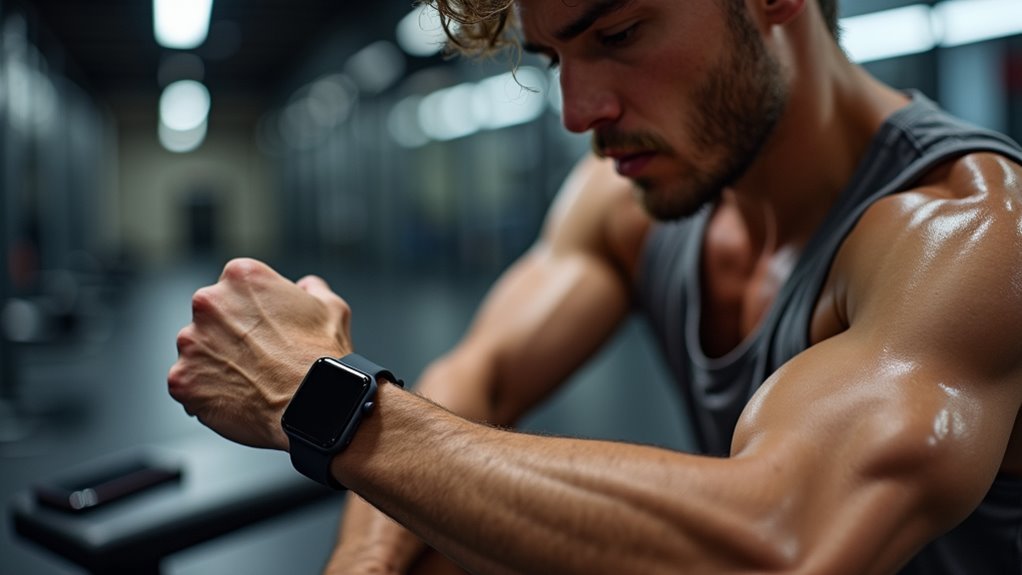
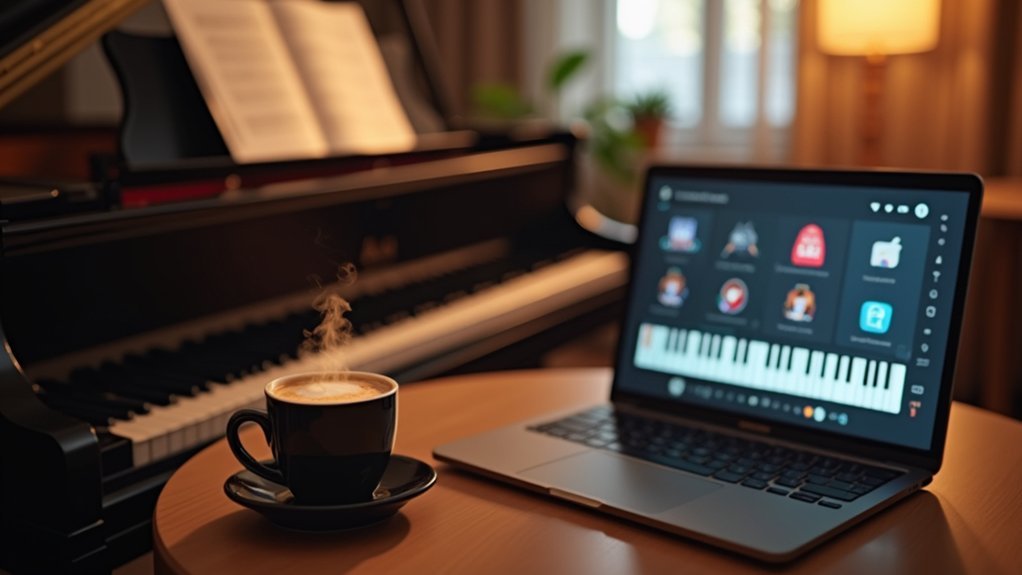

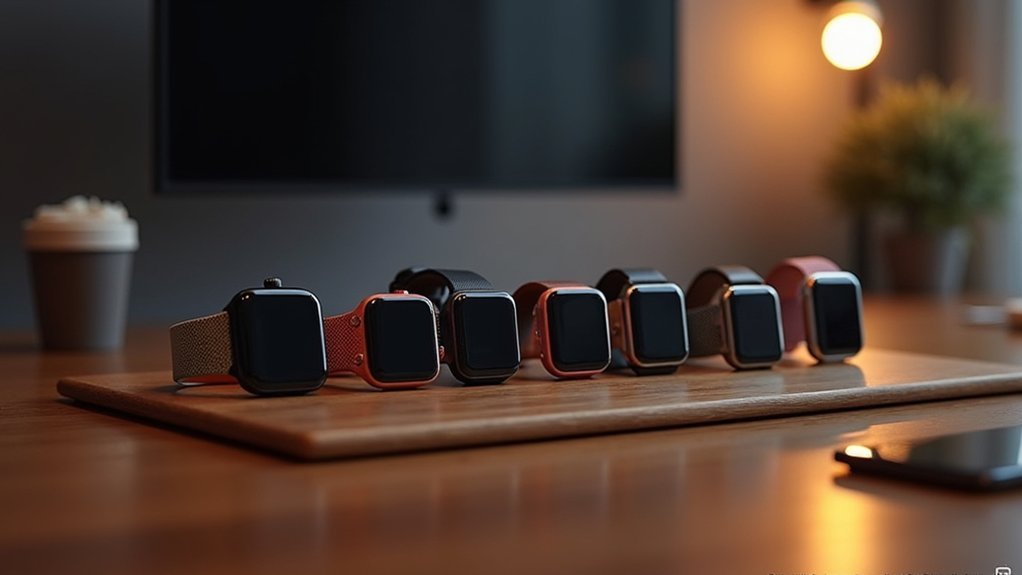
Leave a Reply